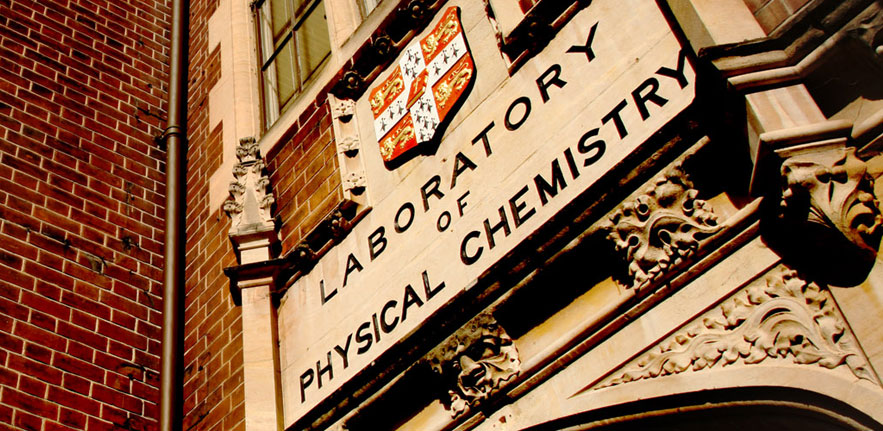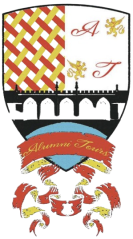Science Hotspots in Cambridge City

Science hotspots
During the Great Plague of 1665, when a third of Europe died, many academics were sent home. Isaac Newton returned from Trinity College to his family home Woolsthorpe Manor, where the story goes that gazing at an apple tree in the garden, he was inspired to discover the theory of gravitation. He lived in Trinity for most of the rest of his life, in a room to the right of Great Gate, outside of which is an apple tree said to be grafted from ‘the’ apple tree.
Even earlier than this, William Harvey was a fellow of Gonville and Caius College; little known now he is a key figure in the history of medicine, discovering the circulation of the blood. Few would know that his statue is on Trinity Street (just opposite Trinity Lane), and he lends his name to Harvey Street and Harvey Court. Caius College, as it is known, can also boast “the most important man ever born in Australia”, Howard Florey, who didn’t discover penicillin (that was Alexander Fleming), but conducted clinical trials and developed mass production of it during the Second World War.
Charles Darwin is another big hitter in Cambridge science. He was not a very successful student at Christ’s College, but was recommended by his tutor as a suitable paying guest on the HMS Beagle trip to South America. While there he formulated his theory of evolution, although he didn’t publish it for nearly 30 years until Alfred Wallace independently came up with the same theory. Christ’s College occasionally opens Darwin’s rooms to the public, but for more ready access there is a decent display about him in the Sedgwick Museum, and his beetle collection is in the Zoology Museum. Darwin College, founded in 1964 for graduates, is so called because colleges bought the land from the Darwin family, many of whose members had settled in Cambridge.
Around Darwin’s time, Britain was in danger of falling behind in science, which had only been taught theoretically not practically. The Cavendish Laboratory, set up in 1874 in Free School Lane, was one of the first labs in Britain, teaching students through experimentation, and encouraging collaboration of researchers. This resulted in a real heyday of Cambridge science: James Clerk Maxwell, who had formulated electromagnetic theory, was the first director; JJ Thomson was director from 1884, discovering the electron during his tenure; Ernest Rutherford, who had split the atom in Manchester, was then made director in Cambridge and oversaw a flourishing culture of science including James Chadwick’s discovery the neutron (Chadwick later went to work on the Manhattan Project to develop the atom bomb). A hundred years after its opening, the Cavendish moved to West Cambridge, as have many of the other large university departments. The lab has reached a tally of some 30 Nobel Prize winners.
The Cavendish Laboratory is also where Francis Crick and James Watson discovered the double helix structure of DNA in 1953, announced in the local Eagle Pub (where you can sample the obligatory DNA IPA). There is a monument to Crick in the corner entrance of Gonville and Caius College, while a large double helix sculpture adorns the gardens of Memorial Court (part of Clare College, in front of the University Library), where Watson is a fellow. Some controversy surrounds the discovery, as Maurice Wilkins shared his colleague Rosalind Franklin’s results with Crick and Watson, and this helped them in their discovery. Wilkins shared a Nobel prize with Crick and Watson, but not Franklin, who had died by then (the Nobel prize cannot be awarded posthumously). Some people feel that Franklin (who was an undergraduate at Newnham, before moving to King’s College, London) never got the recognition she deserved, which has led to students defacing the Clare sculpture. After cleaning the sculpture several times, the college gave in and added on the names of Wilkins and Franklin.
Alan Turing was a mathematician and fellow of King’s College, famed for his lead role cracking the Enigma codes in the Second World War as well as being one of the most significant people in the development of the computer. After being convicted of homosexual acts, he committed suicide in 1952 at the age of just 41; he was only pardoned in 2013, and is now on the back of the £50 note. Bill Tutte of Trinity College is another mathematician who worked at Bletchley Park, cracking the Lorenz machine, which the Germans started using once they realised that Enigma was no longer secure.
Coming right up-to-date, disabled physicist Stephen Hawking lived for many years in Harvey Court (on West Road), as a fellow of Gonville and Caius College, and earlier was a PhD student in Trinity Hall. There is an apocryphal story that from his undergraduate days at Oxford, where his Oxford tutors were debating his degree result, until told by Hawking that if he got a First he’d go to Cambridge and otherwise stay in Oxford. Whereupon they rapidly decided to give him a First! In Cambridge he was a regular at the Department of Applied Mathematics and Theoretical Physics, and in fact delivered a very popular lecture series which was turned into The Brief History of Time. It was my first experience of seeing students actually wanting to get out of bed to attend lectures, and also my first experience of having TV cameras in the audience. He died in 2018, and his funeral service was in Great St Mary’s Church (although he was buried in Westminster Abbey).
The University has spawned a plethora of computing, technology and biotech start-up companies, and there is a fast-growing network of Science Parks, the largest on the north of the city, which have earned the city its Silicon Fen sobriquet. In the late 19th century this focused on the manufacture of scientific instruments, with Pye originating here, and by the end of the 20th century ARM was developing its semiconductor processors that are now used so widely in technology. World-leading work on artificial intelligence and voice recognition (now used in Siri and Alexa) has emerged from other start-ups, benefiting from bridging the worlds of research and entrepreneurship. Microsoft, Google and Apple have now set up research facilities in the city, and pharmaceutical giant AstraZeneca has moved its HQ here (all despite Brexit, which Cambridge voted vehemently against!). There is also much medical research at Addenbrookes Hospital, with its biomedical campus that now includes a state-of-the-art Royal Papworth Hospital, renowned for its ground-breaking transplants. Combine this with the station area, which is a hugely popular commuter base for London, and it is no wonder why house prices are so high!
– Christopher Jagger ‘King’s College, Alumni’
